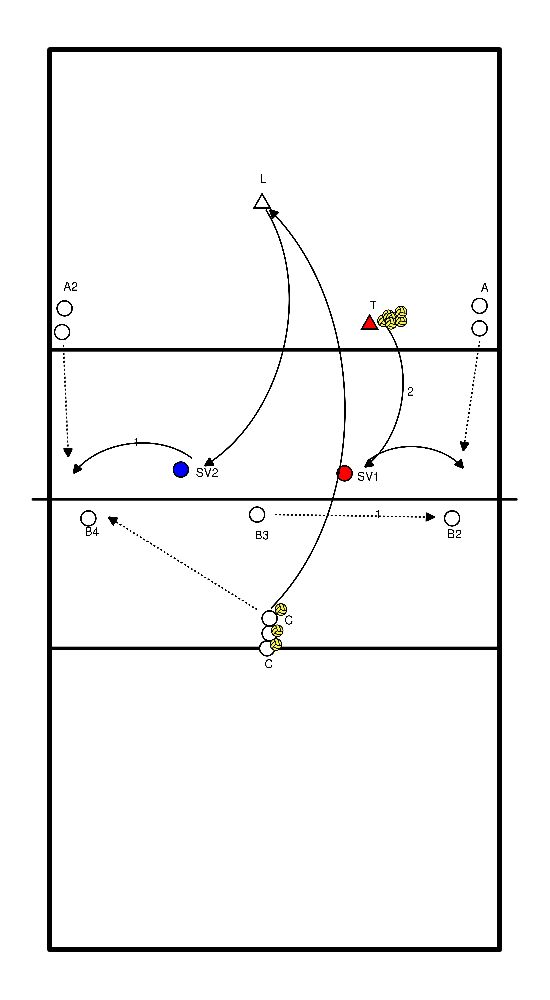Volleyball exercises for u18
- in pairs. 1 works the other has rest
- bench up and down with 2 legs at the same time (3x 20 - if you can)
- bench up and down, alternating left and right (3x 20)
- Push-ups, remember that their backs are straight
- Abdominal muscle:
- ball in your hands, legs up and try to touch the toes with the ball (30x)
- Place ball on the ground left and right of your body with your arms stretched out (both 30x)
- Stand between 2 lines and move LAOW and touch the side lines
- 2 rows of players
- 1 row on the left back
- 1 row on the right back
- 1 SV
- create with 3 pawns a virtual line where they have to stand.
- Trainer stands at the other side of the net and throws the ball somewhere in the field.
- 1 of the 2 front rows calls LOS or I (agree on this) Â and plays the ball to SV
- This one calls new SV
- SV takes ball and puts it in ball pit
- SV joins one of the rows
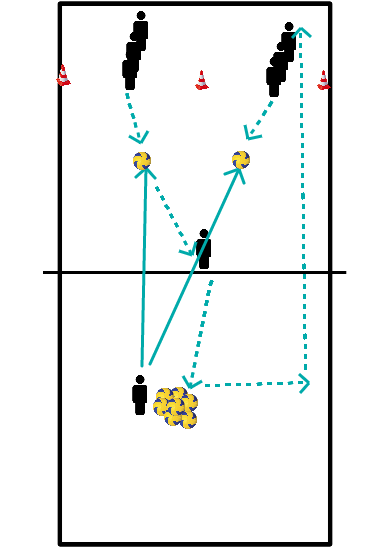
- All 1 ball and hit the ground against the wall.
- Hit the ball so your wrist is over the ball.
- Remember to get out and both arms in the air.
2 teams , 1 ball
- everyone plays ball individually BH against wall above a line
- players count each other
- keep score
- counts for the club of 100 BH
- do this exercise about 10 minutes
- push-ups
- sit-ups
- lie flat
- knees up
- arms crossed
- raise shoulders +/- 15 cm
- all 1 ball
- serve quietly against the wall
- try to catch the ball yourself.
3 teams with 1 ball. Player a and player b stand next to each other at the net and player c stands opposite a. A throws the ball to c and c plays underhand to b. c moves opposite b and then passes the ball to a. If you succeed you may continue to play, but it must be concentrated and neat!
pairs
- players stand opposite each other about 2-6 meter apart (players determine the distance)
- player 2 hits the ball to player 1
- player 1 passes the ball back
- player 2 gives a set up to player 1
- player 1 hits the ball
- player 2 passes the ball back
- player 1 gives set up
- etc
| player 1 | player 2 |
| pass | |
| setup | |
| smash | |
| pass | |
| setup | |
| smash | |
| etc |
Aim: Players Setup from 1st time + targeted attack.
- T plays ball high over the net in the attack zone.
- Sv enters from pos.1 and sets up for -or backwards.
- A attacks on the mat/goal.
Expand : Block, middle attack, ...
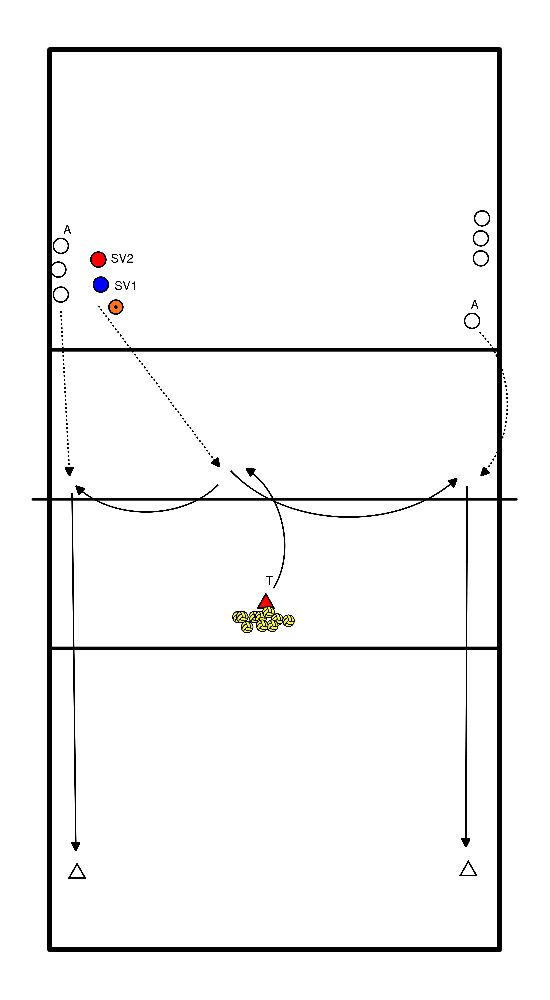
Goal : develop game insight for attack
- A1 plays the ball to SV.
- Sv set-up to pos.4 where A attacks.
- At the moment A attacks, A1 plays a second ball to SV.
- B & B1 take care of the block. (B1 always starts from pos.3), L defense.
- Second attack of A. place ball. L stands on a mat. Where L is not standing should be played to.
We try to grow into a match form. Block gets points when attack can be stopped. Attack when scored or ball on the mat. Defender when defended.
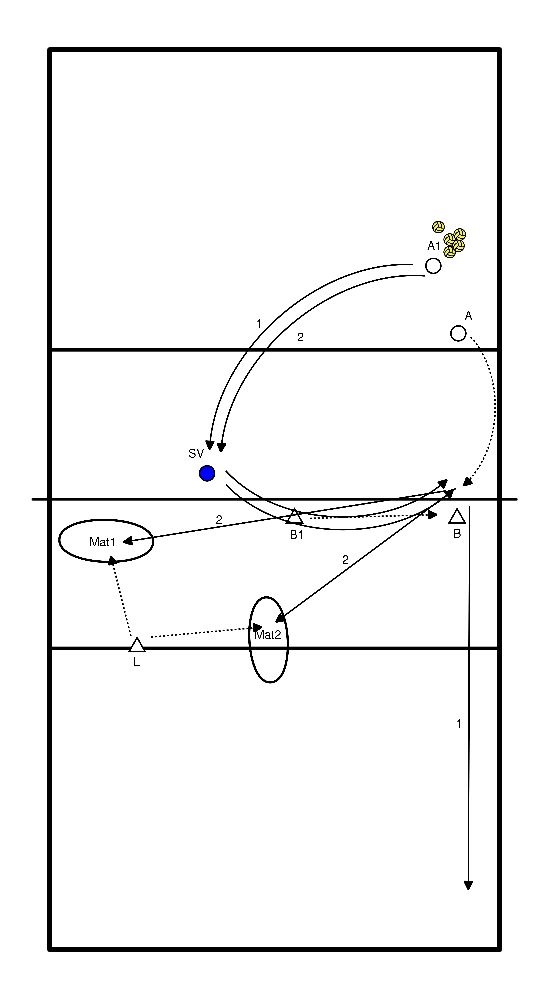
Goal: Libero training and defense
- T plays in tempo the balls to SV.
- SV set-up (2nd tempo) to A (position 3) --> targeted attack to position 1 or to B (position 4) --> targeted attack to position 6.
- L starts from pos 6 + defense to SV2
Extension 1 : After defense from L to SV, set-up to position 4 where C attacks (aimed)
Extension 2 : L2 defended attack from C, C is going to catch ball.
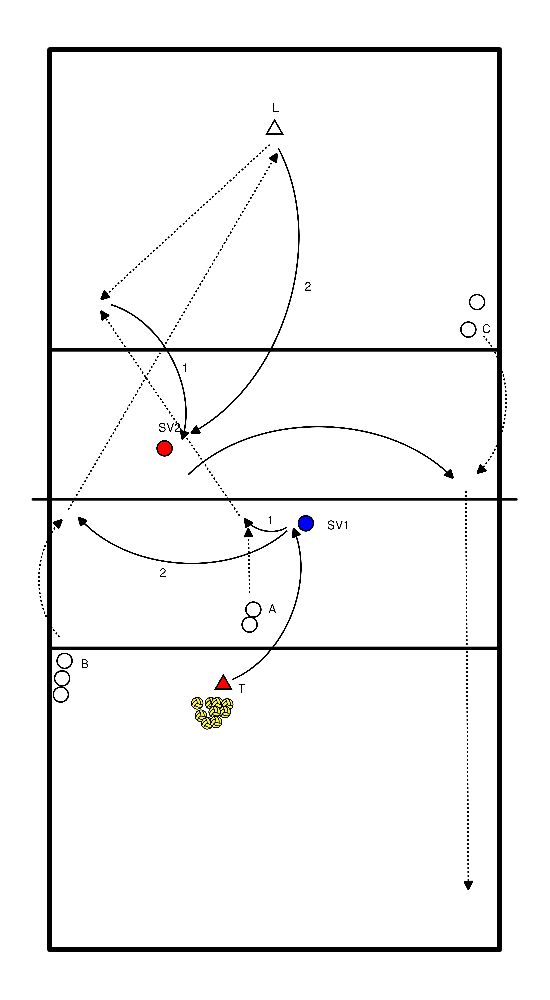
Purpose: peripheral view.
- C plays the ball to L.
- L plays the ball to pos 3/2 --> SV2
- Meanwhile, B3 moves to pos 2 or 4. (draw. to 2)
- SV2 setup to the pos. where there is only one block.
- C goes blocking
- A attacks.
Meanwhile:
- T plays ball to SV1
- SV1 setup to attacker where there are two blocks.
Extension : field defense.
